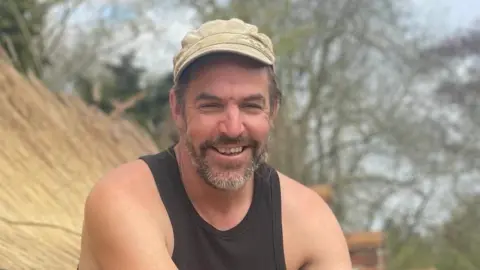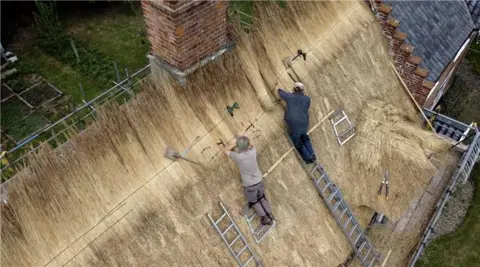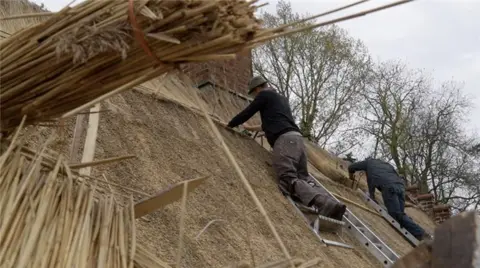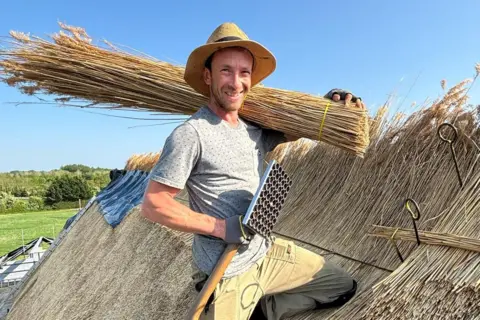'Safeguard thatching or areas risk losing character'
 Jamie Niblock/BBC
Jamie Niblock/BBCA master thatcher said it was important to "safeguard" the industry or otherwise villages risked "losing character".
Poor harvests of long straw over the last two years, aging machinery and shortages of trainees have caused some thatchers to leave the industry and lay off staff.
Historic England said some tradespeople were still thriving, but there was a rising concern that producers could stop growing materials locally if the weather and demand harmed their business.
Master thatcher Nick Walker, from Kirby Cane, near Bungay in Suffolk, says he has about a three-year waiting list and wants to protect the profession.
"There have been some calls to loosen up listed buildings restrictions to allow different materials to be put on the roof instead of traditional long straw. I don't agree with that," he explained.
"I do understand why people are pushing, but if people can hold on, wait, and get the correct materials, that will actually safeguard the future of those roofs.
"We've got something special here."
In Britain it is estimated there are about 25,000 buildings with thatched roofs that are listed, which means there are restrictions on the material that can be used and planning permission must be sought for changes.
 Jamie Niblock/BBC
Jamie Niblock/BBCDespite suggestions the trade is dying out, Mr Walker said he had seen a resurgence of interest in traditional craft from young people and the industry's "darker days" were long gone.
"I would say most thatchers see themselves as craftsmen instead of businessmen," he added.
"They're looking to make a roof which lasts [and] is beautiful. They're not doing it just to turn it over as fast as possible.
"It's really important to me as a thatcher to safeguard the built environment, the heritage, the vernacular style.
"So many areas of construction have gone down a route of standardisation, a route of homogenisation and we've lost character because of it."
 Jamie Niblock/BBC
Jamie Niblock/BBCLuke Fitzgerald started thatching soon after he left school.
The 37-year-old first got a taste for the trade aged nine, when he met a thatcher at a Tudor re-enactment at Kentwell Hall in Long Melford - a thatcher who is his colleague today.
He is treasurer at the East Anglian Master Thatchers Association.
"There is nothing like the long straw thatching - anywhere in the world - like the straw thatching there is in Suffolk and East Anglia," said Mr Fitzgerald, who lives in Walpole near Halesworth.
"We should try to keep it because it's such a good part of our heritage and it would change the look of lots of little villages and they would completely lose their charm."
 Harrison Rodwell
Harrison RodwellAlison Henry, head of building conservation at Historic England, said this year had been tough for some thatchers due to a "serious shortage" of materials following two bad harvests.
"I think some thatchers are doing really well at the moment, for others it is much more of a challenge. It's a really variable picture," she said.
Ms Henry said Historic England was "on the whole" supportive of a change of materials being used if a building is at risk because of shortages.
She added, however, that avoiding the use of long straw would mean "less incentive" for producers which could lead to further issues.
Follow Suffolk news on BBC Sounds, Facebook, Instagram and X.
